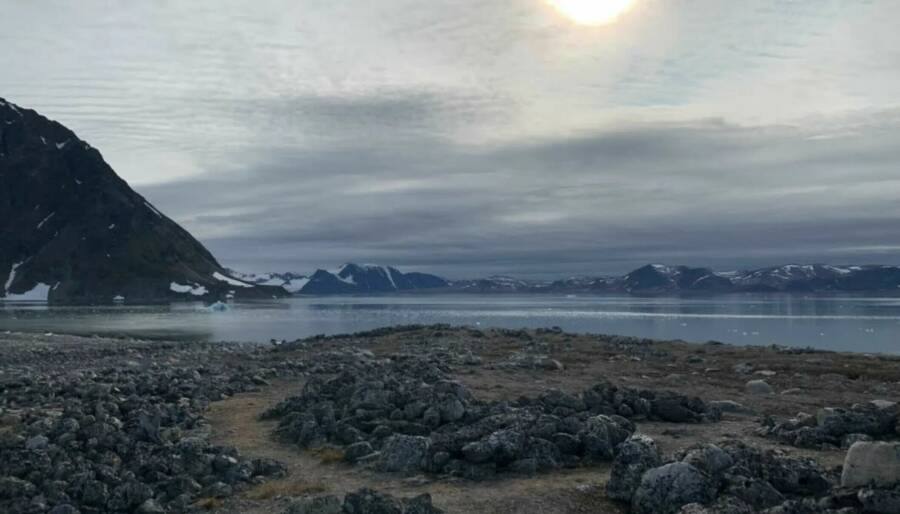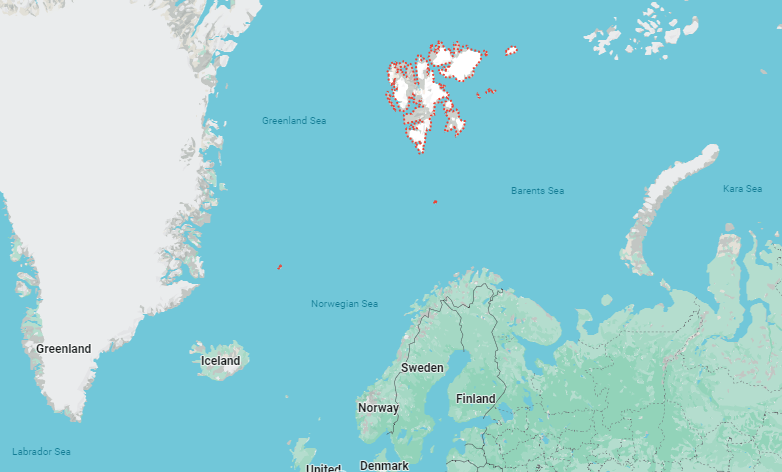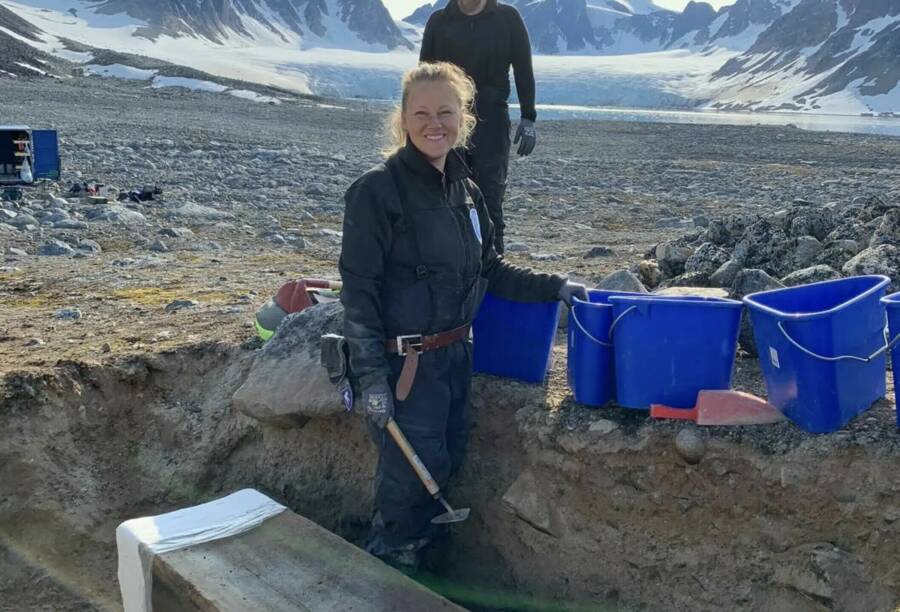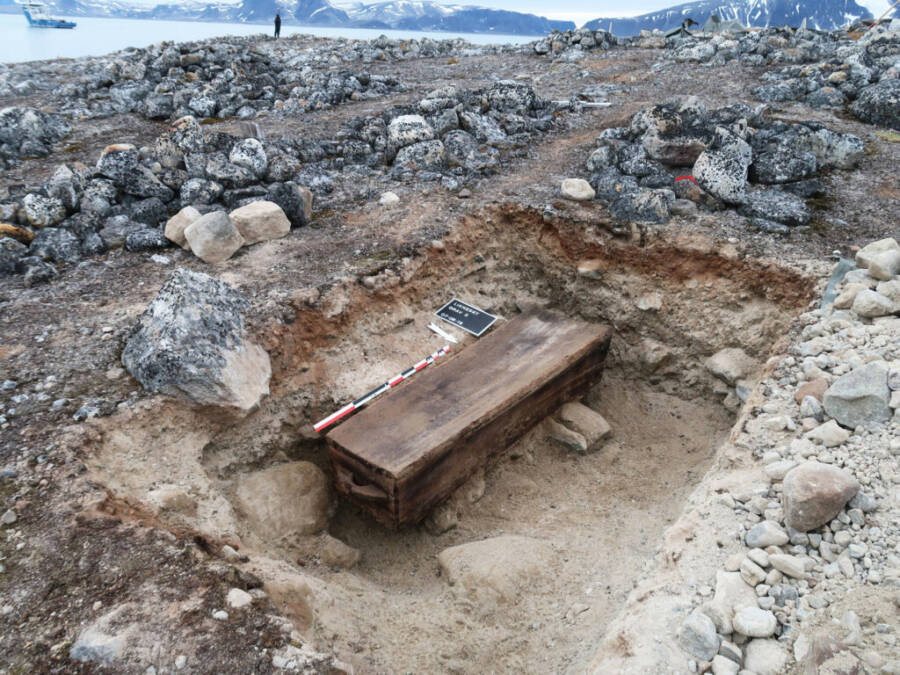Archaeologists studying human remains from whalers' cemeteries in Svalbard, Norway have uncovered fascinating information about working class life in the 17th and 18th centuries.

Lise Loktu / Governor of SvalbardResearchers excavate burials from a whalers’ cemetery.
Recently, researchers from the Norwegian Institute for Cultural Heritage Research embarked on a project to analyze the Svalbard archipelago’s 800 registered whaler burials dated to the 17th and 18th centuries.
While whaling was a lucrative industry, it was also a dangerous one, and many whale hunters died on the job from injuries or illnesses like scurvy — leading to the construction of a number of Arctic cemeteries specifically for whalers. Thanks to the region’s cold climate and permafrost, the whalers’ remains are exceptionally well preserved, making it a promising location for research.
So far, the archaeological team has excavated a handful of burials, providing rare insight into the lives of working class European populations hundreds of years ago.
Norwegian Archaeologists Excavate A Whalers’ Cemetery In The Arctic

Lise Loktu / Governor of SvalbardLikneset, Svalbard, where the area’s largest whalers’ cemetery is located.
In 2023, archaeologists from the Norwegian Institute for Cultural Heritage Research set out to explore the impacts of climate change on whalers’ graves on the archipelago of Svalbard.
Svalbard, previously known as Spitsbergen, is a Norwegian territory in the Arctic Ocean. It rose in popularity in the 17th century as a stop for whalers. Later, in the 20th century, workers from multiple countries flocked to towns in the region to work in the coal mining industry. Such was the case for the now-abandoned Soviet mining town in Svalbard called Pyramiden.

Google MapsSvalbard, Norway, dotted in red.
Over the years, researchers have identified some 800 whalers’ graves on the Svalbard archipelago. Now, the team of researchers, led by archaeologist Lise Loktu, hopes to excavate and analyze the remains before the site is damaged by erosion. They also plan to compare the newly excavated remains to graves excavated in the 1980s to see how the site may have been affected by climate change.
“This is the absolute coolest thing I’ve been a part of during my archaeological career,” Loktu told Science Norway.

Hilde Sømme Melgaard / Governor of SvalbardArchaeologist Lise Loktu excavating Likneset in 2019.
Because of the cold conditions in Svalbard, many of the human remains are remarkably well preserved, despite dating to the 17th and 18th centuries.
“Nowhere else are there so many well-preserved graves representing parts of the European population from this period,” Loktu said. “The buried individuals still have their skeletons, and remains of hair, skin, and innards have been found.”

Lise Loktu / Governor of SvalbardA preserved skeleton and textiles from the Likneset cemetery.
In addition to the remains, the archaeologists uncovered a number of well-preserved coffins, tools, and clothing items within the burials. Loktu noted that the whalers did not use specialized clothing for their trade, but simply wore “regular winter clothes from their homeland.”
“We see that they repaired and used their clothes for a long time,” Loktu said. “These were poor people.”
That’s another reason why studying these graves is so important.
“In museums around Europe, textiles from the upper class are often represented,” Loktu explained. “There has been little knowledge about the clothing and equipment of ordinary people.”
The Perilous Whaling Industry Of The 17th And 18th Centuries

Public DomainDutch whalers near Spitsbergen, by Abraham Storck. C. 1690.
Beginning in the 17th century, the whaling industry boomed in response to European market demands. Whale blubber was used in lamp oil, fish oil, and soap production. The oils could also be used in the making of fabric or dye, while whale bones were often used to make luxury items like parasols or women’s corsets.
Whale blubber was incredibly valuable, and working class men gravitated toward the industry despite its reputation for being hazardous and strenuous work.
A typical day of whaling involved sending a group of rowboats out in search of whales. When the men spotted one, the rowboats would all harpoon the whale from different angles. This process was dangerous; the men needed to be careful not to ensnare themselves on the lines and run the risk of sinking the boat.
When the struggling whale finally tired itself out, the crew would lance it and then take it ashore, where they would strip off its blubber and boil it to make oil.
Many whalers died during the hunting season, and those who were lucky enough to survive often suffered from diseases.
“Many also died of scurvy, a deadly disease caused by a prolonged lack of vitamin C, which was common among sailors and whalers,” Loktu told Science Norway.

Lise Loktu / Governor of SvalbardA coffin unearthed at a whalers’ cemetery.
The research team plans to use DNA and isotope testing to learn more about the whalers’ health, diets, and countries of origin. However, archaeologists are racing against the clock to glean this information.
“The graves are gradually being washed into the sea by erosion, so it’s about saving knowledge that’s disappearing,” Loktu said.
According to the Norwegian Institute for Cultural Heritage Research, the project aims to determine whether climate change has caused the graves to degrade over the last 30 years.
Excavations are ongoing, so the world can look forward to even more revelations about the lives of ordinary whalers from centuries past.
After reading about the whalers’ cemetery, dive into the true story of the whale ship Essex and how it inspired the novel Moby Dick. Then, read about the Kraken, a frightening sea monster from Scandinavian lore that was rumored to destroy ships.





